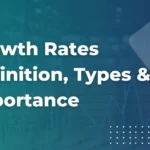Introduction to Negative Float
What is Float in Finance?
Float is a term used in finance to describe the delay between when a transaction happens and when the money is actually taken out of your account. For example, when you write a check, the money doesn’t leave your account right away. It can take a few days to process. The time between writing the check and when the money is taken is called “float.”
In banking, float can also mean the difference between the balance that shows in your company’s records and the balance in the bank. This happens because some payments are still being processed or deposits haven’t been cleared yet.
Key Takeaways
- What is Float? Float is the time between when a transaction happens and when the money is actually moved. Negative float occurs when payments leave before incoming money arrives.
- Why Negative Float is Risky: It can cause overdraft fees, problems with suppliers, and higher borrowing costs. Traders may face penalties too.
- How to Manage Float: Keep extra money in your account, align payment dates with when money comes in, and use tools like budgeting apps to stay on track.
- Use Technology: Real-time payments, automation, and new tools like blockchain can help manage cash flow and reduce float.
- Why Financial Knowledge Helps: Understanding your cash flow and using smart strategies can prevent negative float and improve your financial decisions.
What is Negative Float?
Negative float happens when money leaves your account to pay for something before you have received enough money from other sources to cover it. For example, if you pay a supplier but are still waiting for your customers to pay you, this creates negative float.
Negative float can show that there are short-term problems with your cash flow or that you’re not managing your finances well. It’s a sign that your payments and income are not lining up, which can cause financial problems.
The Mechanics of Float
Positive Float: A Window of Opportunity
Positive float happens when you can use the time it takes for transactions to clear. For example, if you write a check to a vendor, the money stays in your account until the check is processed. This means you have more time to manage your cash flow or even earn interest on the money before it leaves your account.
Negative Float: When Timing Works Against You
Negative float happens when the timing of your payments and deposits doesn’t work out well. For example, if you send an electronic payment that takes money from your account right away, but you’re still waiting for funds from a client to come in, your account balance can go into negative float.
This can cause problems with your cash flow, and you might end up paying overdraft fees, penalties, or borrowing money in the short term. It’s like juggling without a safety net—if the timing isn’t right, it can lead to costly consequences.
Examples of Negative Float
In Corporate Finance: Balancing Payments and Receivables
Imagine a business that needs to pay suppliers to keep things running. The company sends a large payment to a vendor, but the funds from a big client invoice haven’t cleared yet. Even though the money is on its way, the business ends up with negative float because the payment to the supplier is made before the client payment arrives.
This can cause cash flow problems and force the business to rely on short-term loans or lines of credit, which can be expensive because they come with interest costs.
In Personal Banking: Writing Checks Without a Cushion
In personal finance, negative float often happens when you write a check or make an electronic payment before you have enough money in your account to cover it. For example, if you deposit a paycheck on a Friday, but it doesn’t clear until Monday, and you use that money to pay your rent before it clears, you could end up in negative float. This could lead to overdraft fees if the payment goes through before your deposit is available.
In Stock Trading: Using Unsettled Funds
In stock trading, negative float can happen if you don’t wait for a transaction to settle. For example, if you sell shares on Monday and think you can use the money right away to buy more shares, you could run into trouble. The funds from the sale won’t be available until the trade settles, which usually takes two business days. If you use the money too soon, you might face penalties or margin calls.

Causes of Negative Float
Delays in Incoming Payments
Sometimes, payments you’re expecting don’t arrive as quickly as you planned. This can happen because of slow bank processing, mailing delays, or holidays that mess up the payment schedule. When the money doesn’t arrive on time, it leaves a gap between when you expect to have the funds and when they actually show up, which can lead to negative float.
Misalignment of Payables and Receivables
In businesses, negative float often happens when payments you owe (payables) are not in sync with payments you’re expecting to receive (receivables). For example, if you have to pay your suppliers before you get paid by your customers, it can cause cash flow problems. This misalignment can lead to negative float and create financial stress in the short term.
Frequent Outgoing Payments Without Planning
If a business has a lot of payments going out, like payroll, vendor invoices, or loan payments, it can cause negative float if there isn’t enough money coming in regularly to cover those expenses. Without careful planning of cash flow, these payments can quickly become larger than the incoming funds, putting a strain on finances and causing negative float.
Risks and Implications of Negative Float
For Individuals: Hidden Costs of Negative Float
For individuals, negative float can be expensive. One of the most common problems is overdraft fees. This happens when you try to make a payment or write a check, but your account doesn’t have enough money to cover it. If you write a check before your deposit clears, you might get hit with an overdraft fee, even though the money will be available the next day.
In addition to fees, negative float can hurt your credit score. If your account shows insufficient funds or late payments, this can be reported to credit agencies, making it harder to get loans or credit in the future.
For Businesses: Strained Vendor Relationships
For businesses, negative float can damage relationships with vendors. If you can’t pay your supplier on time because you’re waiting for customer payments, the supplier might stop trusting you. They could demand stricter payment terms or stop doing business with you altogether, which can hurt your operations.
Moreover, negative float often forces businesses to use short-term credit, like overdraft protection or lines of credit, to cover payments. This can increase borrowing costs, as these solutions often come with high-interest charges, reducing the company’s profitability.
For Traders: Penalties and Margin Calls
For traders, timing is everything. If you sell securities and try to use the money before the trade settles, you could break trading rules, leading to penalties. In leveraged trading (where you borrow money to trade), negative float can trigger margin calls, which force you to deposit more money to keep your position open.
Real-World Examples of Negative Float
Impact on Personal Budgeting
For individuals, understanding and managing float is important for avoiding financial problems. If you make a mistake in timing, like scheduling a bill payment before your paycheck clears, you might end up with unnecessary fees or even problems with important services like rent or utilities. By making sure that payment schedules match up with when you receive income, individuals can avoid getting into negative float.
Role in Corporate Treasury Management
In the business world, treasury teams keep a close eye on float to make sure they have enough money to cover expenses and keep things running smoothly. Companies need to plan when they pay bills and when they expect money to come in, so they don’t face cash shortages. If they don’t manage float well, it can cause delays, make creditors unhappy, and lead to higher costs from emergency loans.
Challenges for Financial Institutions
For banks and other financial institutions, negative float is part of the bigger liquidity management issues they face. When there are delays in moving money around, especially when there are a lot of transactions or market problems, it can put pressure on the whole banking system. Banks must find a balance between processing transactions quickly, making sure everything is correct, and following the rules set by regulators.
How To Handle Negative Float ?
For Individuals: Stay Ahead of the Game
- Maintain an Account Buffer One of the easiest ways to avoid negative float is by keeping extra money in your checking account. Having a small balance above what you usually need can act as a safety net. If there’s a delay in your deposit, this extra money ensures you can still cover your payments.
- Use Overdraft Protection Wisely Many banks offer overdraft protection, which covers shortfalls if your account doesn’t have enough money. However, these services often come with fees or interest. It’s best to use overdraft protection as a backup plan, not as something you rely on regularly.
For Businesses: Align and Automate
- Streamline Accounts Receivable Collections Businesses can reduce negative float by getting payments from customers faster. Encouraging customers to pay electronically (like through ACH transfers) can help speed up the process and reduce delays caused by checks or manual deposits.
- Leverage Cash Flow Forecasting Tools Cash flow forecasting tools help businesses predict when money will come in and when it will go out. By aligning payment schedules with expected income, businesses can avoid mismatches that could lead to negative float.
- Automate Payments and Collections Automated systems can help businesses time their payments better and make sure receivables are collected on time. This reduces mistakes and ensures that money is available when needed.
For Traders: Know the Rules
- Understand Settlement Dates Traders should always know when their transactions settle. This is important when you want to reinvest funds from recently sold securities. Understanding the typical T+2 settlement timeline helps prevent using funds before they are actually available.
- Maintain Margins Keeping enough margin in your account is essential to avoid margin calls or penalties. This ensures your trading account remains in good standing, even when there are delays in settlement.
Technological Solutions to Handle Negative Float
Real-Time Payments: A Game-Changer
With the growth of real-time payment systems, float periods have become much shorter. Modern banking platforms allow money to move instantly between accounts, cutting out the delays caused by check clearing or ACH transfers. This helps both individuals and businesses reduce the risk of negative float because payments can be processed right away.
Automation: Simplifying Cash Flow Management
Automation tools are changing the way businesses manage payments and reconcile accounts. These tools can:
- Automatically match incoming payments with invoices, helping reduce delays in collecting payments.
- Schedule outgoing payments to line up with when cash is expected to come in.
- Provide real-time updates on account balances and transactions.
For individuals, budgeting apps and automation tools can help by sending alerts if your balance is low or if deposits are delayed, making it easier to keep track of your finances.
Blockchain and Digital Currencies: The Future of Settlement
New technologies like blockchain and digital currencies are changing how transactions are settled. Blockchain can clear and settle transactions almost instantly without needing a middleman. Digital currencies, like stablecoins, also allow for quick transfers, reducing settlement times to just a few seconds.
These innovations are especially useful for traders and financial institutions, as they can remove many of the slowdowns and problems that come with traditional payment methods.
Case Studies
Case Study 1: A Retail Business Struggling with Negative Float
A midsize retail company had trouble with negative float because it was slow to collect payments from customers and had frequent payments going out to suppliers. The company used manual processing for invoices, which caused delays in matching payments and made it take longer to collect receivables.
Consequences:
- The company often faced overdraft fees and had to rely on a high-interest credit line to cover shortfalls.
- Relationships with suppliers became strained because payments were inconsistent, which led to less favorable credit terms.
Steps to Recovery:
- The company set up an automated system for collecting payments faster.
- They started using a cash flow forecasting tool to better match their payment schedules with the timing of incoming money.
- They encouraged customers to switch to real-time electronic payments instead of using checks, cutting down delays in payments.
Best Practices Learned:
- Regularly check payment and collection processes to make improvements.
- Keep a cash reserve to cover timing gaps in payments.
- Invest in technology to reduce errors and delays caused by manual processes.
Case Study 2: An Individual Overwhelmed by Overdraft Fees
A freelance graphic designer regularly faced negative float when paying for software subscriptions and other bills. The designer’s clients often delayed their payments, creating a gap between income and expenses.
Consequences:
- Overdraft fees quickly added up, eating into their profits.
- The financial stress affected their ability to focus and work efficiently.
Steps to Recovery:
- The designer started using a budgeting app to track cash flow and receive alerts when balances were low.
- They negotiated faster payment terms with clients to reduce delays in receiving money.
- They set up a separate account for regular expenses, ensuring it was funded in advance to avoid overdrafts.
Best Practices Learned:
- Keep a close watch on account balances and incoming payments.
- Use technology to better match ongoing expenses with income.
- Maintain an emergency buffer in case payments are delayed.
How Negative Float Affects Market Participants
Impact on Banks and Financial Institutions
Negative float can cause a ripple effect throughout the banking system. When individuals or businesses experience negative float, they may need to use credit or overdraft facilities, which increases the bank’s exposure to short-term lending risks. For banks:
- Lost Interest Income: Float delays mean that banks have less time to invest idle funds, which reduces their ability to earn interest and affects profitability.
- Increased Lending Exposure: If customers rely too much on short-term credit, it raises the risk of defaults, especially during economic uncertainty.
Implications for Regulators
Regulators are concerned about the risks to the financial system caused by negative float. If payment systems are often out of sync, it can cause stress across the broader financial market. For example:
- Slow settlement times can make liquidity issues worse during times of market disruption, making it harder for financial institutions to operate smoothly.
- Regulators might encourage the use of faster clearing and settlement technologies, like real-time gross settlement (RTGS) systems, to reduce delays and improve overall market stability.
Importance for Investors
Investors should pay attention to how well a company manages its cash flow and float. A business that often deals with negative float might:
- Be relying too much on short-term borrowing, which could be a sign of financial instability.
- Struggle to meet its financial obligations, making it a riskier investment.
Smart investors look for:
- Clear reporting on how efficiently a company manages its working capital.
- Strong treasury management practices that ensure the company can meet its financial commitments.
- Evidence that the company uses technology to streamline payment processes and avoid float issues.
Practical Applications and Strategies
Managing Float in Everyday Life
Whether you’re managing your personal finances or running a business, staying on top of your cash flow can help prevent negative float. Here’s how you can take control:
- Monitor Your Cash Flow Regularly Keep track of when money enters and leaves your account. Individuals can use budgeting apps to track deposits and payments, while businesses should use cash flow management tools to forecast inflows and outflows.
- Schedule Payments Strategically Time your payments to align with incoming funds. For example, pay bills after your paycheck clears, or make sure vendor payments happen when you expect receivables to come in.
- Build a Financial Buffer Having extra funds in your account can help cover unexpected delays. This is especially helpful during times of high transaction volume or around bank holidays when payments may take longer.
The Importance of Financial Literacy
Understanding cash flow and payment cycles is key to avoiding negative float. Here’s why financial literacy matters:
- It helps individuals avoid overdraft fees and penalties.
- It allows businesses to optimize payment schedules and avoid liquidity problems.
- It supports better decision-making when using tools like overdraft protection or credit lines.
Checklist to Prevent Negative Float
- Review your account balances every day.
- Track payment and settlement dates for upcoming transactions.
- Use automation for recurring payments to avoid timing mistakes.
- Communicate with vendors or creditors if you expect any delays.
- Regularly evaluate your cash flow strategy to find and fix any gaps.
Advanced Insights for Professionals
Negative Float as a Metric of Working Capital Efficiency
For professionals, negative float isn’t just a problem; it can be a valuable metric. It reveals how efficiently a company is managing its working capital. Frequent or long-lasting negative float may suggest:
- A mismatch between payment terms with customers and suppliers.
- Overreliance on short-term credit.
- Poor alignment between day-to-day cash flows and financial obligations.
Analytical Tools for Float Optimization
Professionals can use advanced tools to monitor and reduce negative float:
- Cash Flow Analytics Software Use platforms that offer real-time visibility into payment cycles, receivables aging, and cash shortages so you can anticipate and manage float more effectively.
- Accounts Reconciliation Systems Automate the process of matching incoming payments with receivables to speed up collections and reduce float.
- Float Period Trackers Specialized tools can measure the time gap between when a transaction happens and when it settles. This gives insights into where delays occur and helps optimize float management.
Macroeconomic Impacts on Float
Negative float doesn’t exist in a vacuum—it’s influenced by broader economic factors. For example:
- Interest Rates: When interest rates are high, borrowing money to cover negative float becomes more expensive.
- Economic Cycles: During economic downturns, businesses may face longer payment delays from customers, making negative float worse.
- Payment System Innovations: As governments and financial institutions adopt faster payment and settlement systems, the importance of float may decrease over time.
Conclusion
Negative float is a common issue that can be avoided with the right approach. By keeping track of your cash flow, timing payments properly, and using the right tools, you can prevent financial stress and avoid extra fees. Whether you’re managing your personal finances or a business, staying ahead of your cash flow is the key to financial success.
FAQ: Understanding and Managing Negative Float
1. What is negative float in finance?
Negative float occurs when outgoing payments are processed before incoming funds are available in an account. This creates a timing mismatch, potentially leading to overdrafts, fees, or financial stress.
2. How is negative float different from positive float?
Positive Float: You benefit from the delay between when a transaction happens and when it settles, as the funds remain in your account.
Negative Float: The delay works against you, as payments leave your account before deposits clear, creating a shortfall.
3. What are common causes of negative float?
Delays in incoming payments, such as slow bank processing or mailing delays.
Poor synchronization between accounts payable (outgoing payments) and accounts receivable (incoming funds).
High-frequency outgoing payments without proper planning for cash flow.
4. What are the risks of negative float?
For Individuals: Overdraft fees, penalties, and possible damage to your credit score.
For Businesses: Strained relationships with suppliers, reliance on short-term credit, and increased borrowing costs.
For Traders: Penalties or margin calls due to unsettled trades.
5. How can individuals manage negative float?
Maintain a buffer of extra funds in checking accounts to cover unexpected shortfalls.
Use overdraft protection services wisely to avoid fees.
Track account balances and incoming payment timelines using budgeting apps.
6. What strategies can businesses use to avoid negative float?
Speed up receivables by encouraging customers to use electronic payments.
Align payment schedules with cash inflows using forecasting tools.
Automate payment and collection systems to improve efficiency and reduce delays.
7. How do real-time payments help reduce negative float?
Real-time payment systems allow funds to transfer instantly between accounts, minimizing delays that can occur with traditional methods like checks or batch processing. This reduces the chances of timing mismatches that cause negative float.
8. What is the role of technology in managing negative float?
Automation Tools: Help streamline payment cycles and reconcile accounts more quickly.
Forecasting Software: Predict cash flow gaps and help align payment schedules with expected funds.
Blockchain and Digital Currencies: Enable near-instant settlements without intermediaries, reducing float periods.
9. How does negative float impact banks and financial institutions?
Negative float increases a bank’s exposure to short-term credit risks and reduces the interest income from idle funds. It also puts pressure on liquidity management, especially during high transaction volumes.












